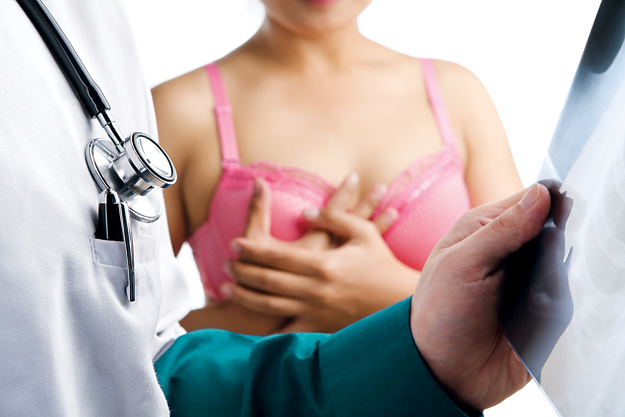
Every October, women are bombarded with images of pink ribbons and encouraged to get a mammogram and take charge of their health.
They're also supplied with confusing statistics and controversial data. News sources claim “Mammograms don't work, especially in young women.” This is only true for some women, who need alternative screening methods. Other sources say not to worry and that mammograms aren't recommended until age 50. Most medical organizations still recommend a first-time mammogram at age 40.
The bottom line? Early detection dramatically improves the odds of surviving a breast cancer diagnosis. While mammography may be an inexact science, especially for younger women and those with dense breasts, it's an important first step towards breast health.
Finding a Mammogram Center
Once you and your doctor agree that it's time for a mammogram, you'll need to choose an imaging center. The imaging center you choose can play a strong role in whether small cancers are detected early on, and you'll want to minimize your chances of being called back for additional unnecessary mammograms or a biopsy, also known as a false positive. Do your research before scheduling an appointment.
“It's not a blood test. These images are interpreted and read by a physician based on their education and experience,” explains Dr. Joseph Russo, section chief of Women's Imaging at St. Luke's University Health Network. “It's important to know who is reading your mammograms. You want to choose a high-volume center that has a lot of experience.”
He noted that until, several years ago, St. Luke's had multiple centers offering diagnostic mammography. Their cancer detection rate was in line with the national average. But since consolidating its diagnostic services to one center, St. Luke's Regional Breast Center in Center Valley, and increasing the number of mammograms read by each radiologist, their cancer detection rate is now 10 percent higher than the national average.
“We're finding more cancers with less callbacks,” he says. “That's only possible from having a small group of radiologists reading a large volume of mammograms. It really makes a big statistical difference. Moreover, this statistical difference would remove the majority of the controversy surrounding mammography's effectiveness.”
Finding the right high-volume center can make a big difference in both your experience and the effectiveness of tests done. “A woman should ask the breast center, ‘What is your callback rate? What is your positive predictive value? What percentage of your biopsies are positive?' These are very intelligent and reasonable questions,” he asserts.
While it makes sense to fear a radiologist missing signs of cancer in a mammogram, false positives can also carry a huge financial and emotional cost. Russo estimates that in a typical setting, 10 percent of women undergoing a mammogram will be called back for additional imaging. Of those women, 10 percent will require a biopsy.
“You're down to one out of 100,” he says. “Of those women who undergo a biopsy, somewhere between three and five will have breast cancer. The goal is to find those five cancers out of 1,000 without calling back so many patients. That is what new technology is getting at—reducing unnecessary anxiety and biopsies.”
When a woman does need additional imaging or a biopsy, Russo's office aims to provide results quickly. He encourages women to ask their doctor about the length of time required for follow-up tests and results.
“We don't want to tell a woman that she needs additional imaging, and that we'll have results in a month,” he says, noting that St. Luke's often aims to have results the next day. “Once you know you need a biopsy, that's when you're really going to need rapid answers and efficiency. Same-day biopsies, for example, significantly reduce the waiting time, and that's what we focus on: decreasing the high-anxiety cases.”
Dense Breasts: What You Should Know
If you've been told you have dense breast tissue, know that it's common, particularly in women under the age of 50. That being said, having dense breasts can increase your chances of having breast cancer and can make early cancer diagnosis more difficult.
“The findings of breast cancer are typically white on a mammogram, and dense breast tissue is white. The analogy that we use is that it's like trying to find a snowball in a snowstorm,” says Russo, who noted many women are not aware they have dense breasts. Seeking out this “snowball” is why women with dense breasts are often diagnosed with larger tumors which may have been missed in prior mammograms.
Dense breast tissue is also an independent risk factor for breast cancer. Women with dense breast tissue are four to six times more likely than the average person to be diagnosed with breast cancer during their lifetime. “When I ask women, ‘Do you have a family history of breast cancer?' most of them know immediately who in their family has had breast cancer. But if I were to ask a woman, ‘Do you have dense breasts?' they have no idea,” Russo says. “Dense breasts are as much of a risk as having a first-degree relative diagnosed with breast cancer.”
It's difficult to know how dense your breast tissue is without having a mammogram—one reason most medical organizations continue to recommend a baseline mammogram at age 40. The exception to this guideline is when a woman has a first-degree relative diagnosed with breast cancer before the age of 50; in this case, the woman should have a baseline mammogram 10 years prior to the relative's age at diagnosis.
“If we do see that you have dense breasts, that's when we say mammography might not be the best or only screening test for you,” says Russo. In his practice, women with dense breast tissue are often referred for additional or alternative testing, such as a 3D mammogram.
“Things in our field are going to get more complicated and it is for good reason. That's because we need to do a better job with dense breast patients,” he asserts. “When you're looking at a mammogram, all of that white, dense breast tissue that you're seeing is superimposed on each other. When you're using a 3D mammogram, you can sort through the breast tissue slice by slice instead of trying to see it all at once.”
New Technology
Advances in breast cancer detection and treatment mean that cancer can be caught earlier and treated more precisely. A growing trend towards individualized medicine is helping, and gone are the days when mammograms were the only screening option. Once again, understanding dense breasts plays a large role in understanding the controversy surrounding the timing of mammograms.
“What we're really looking at is not a mammogram controversy. It's really a dense breast controversy,” says Russo. “We're trying to figure out ways to find cancer effectively in these patients. Mammography is still incredibly useful, but we're trying to figure out which technology is the best way to screen you individually. We're looking at this not as a time when women stop getting mammograms, but as a time when women realize that there are many tools in their arsenal.”
The role of 3D mammograms is growing, especially among women with dense breasts. Automated Breast Ultrasound (ABUS) is also a new technology being used to better screen these women. “It uses standard ultrasound technology to take a uniform picture of the entirety of both breasts,” says Russo. While ultrasound has been used in the past, it was primarily used in a targeted way to examine problem areas. Now it's used as a screening tool for dense-breasted women in addition to mammography.
On the horizon is more liberal use of the breast MRI. A radiologist's most sensitive tool for detecting breast cancer, the breast MRI boasts a 98 percent detection rate. It is mainly used on
high-risk patients as it can lead to false positives and unnecessary biopsies. “It would not be medically feasible, or good practice, to biopsy all of these patients,” says Russo. “What we're hoping for in the future is to do a more rapid-scan MRI, allowing it to be a better screening tool.”
Also new is the ability to genetically analyze tumor tissue after biopsies. This helps to determine a woman's subtype of cancer and create a more individualized treatment plan. “In doing this, the oncologist is able to say that patients with this type of tumor do just as well without radiation as they did with radiation. They're able to tailor the treatment, often avoiding chemo or radiation, based on a specific tumor's genetic makeup. We need to do a better job of determining how a particular tumor will respond to different types of treatment.”
“I think what we're going to see is a real change in the way that women are screened and treated for breast cancer in the next 10 years,” he adds. “The idea that every woman gets a mammogram will one day be considered dogmatic. Everything is moving toward individualized medicine, and I think breast cancer detection will really benefit from that strategy.”
Keep the Conversation Going
In an effort to help more women understand the controversies and advancements in breast health screenings, Russo is creating webinars for physicians as well as short one- to two-minute videos for patients that are posted on St. Luke's website and on social media pages. His goal is to explain, in a casual setting and with easy-to-understand terminology, what it means to have dense breast tissue, when and how women should be screened and what new technologies (such as 3D mammograms) mean for women today.
“I'd like to increase awareness and to have more information out there that people can refer to,” says Russo. “There's still only a 50 percent utilization rate, if not less, of basic mammography. That's after unbelievable strides in increasing the awareness of breast cancer. There's still an enormous amount of cancer that can be found early by taking advantage of mammography.”
















